Expert’s Rating
Pros
- 144Hz OLED display
- Best-in-class performance
- Excellent value
- Phenomenal battery & charging
Cons
- Camera is good, but not great
- Poor IP rating
Our Verdict
The Edge 30 Ultra is a surprisingly excellent flagship from Motorola, with top specs all around and only few flaws. Performance is as good as it gets, battery life is excellent, and the software excels too. At this price, it’s a steal.
Price When Reviewed
Not available in the US
Motorola’s dominant days are long since over when it comes to smartphones, but the company has been building back with a series of quietly excellent phones over the last year or two.
For the most part those have been limited to the mid-range or cheaper premium phones, but the Edge 30 Ultra is a true blue Android flagship, with camera specs, charging speeds, and performance to rival the best.
I approached the Edge 30 Ultra with a touch of scepticism – Motorola phones don’t really feel very exciting, after all, and flagships usually need a little anticipation to them to thrill – but this is easily one of the best phones I’ve used all year, and an excellent Android option.
Design and durability
- Sleek and simple
- Impressively slim
- No IP rating for water-resistance
The Edge 30 Ultra impresses from the outset thanks to a sleek design that’s not quite striking, but is attractive enough in its simplicity.
Here in the UK the phone is only available in black, though a white model is available elsewhere. Either way this is a monochrome experience that’s a far cry from the snazzy flagships of other brands. Even the camera module feels compact and restrained by 2022 standards.
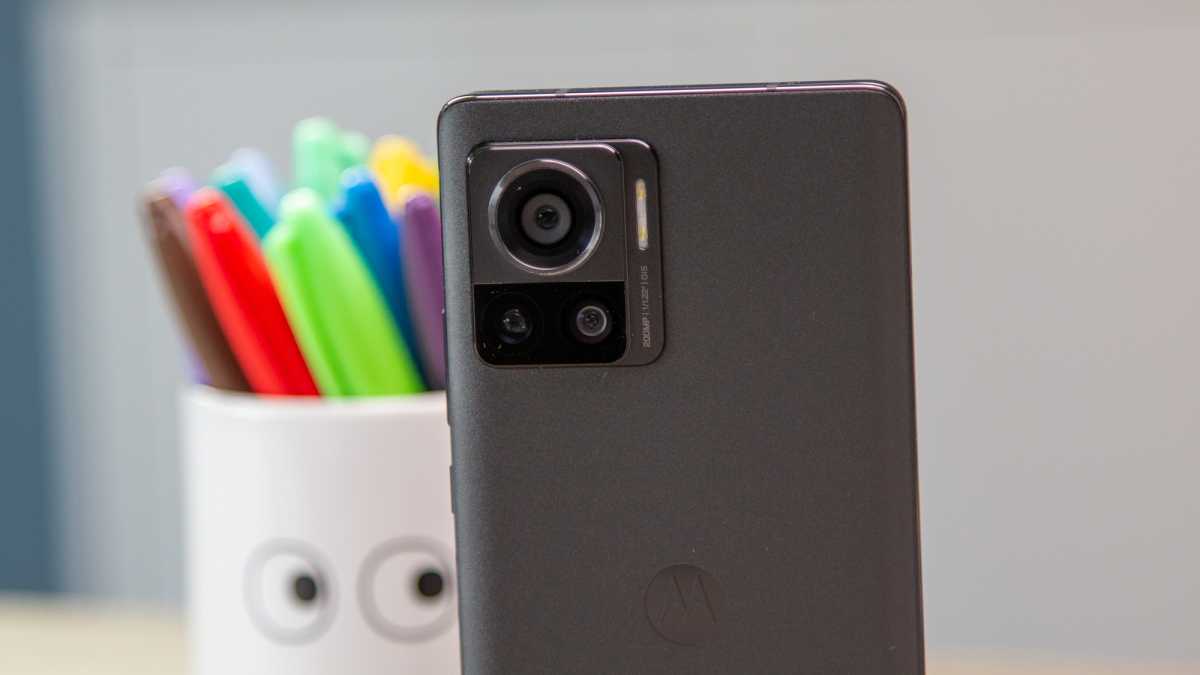
Dominic Preston / Foundry
The slightly textured rear glass on my black model has a sort of satin sheen and a slight sparkle to it that I like but don’t love, though I do wish it wasn’t interrupted by two separate Motorola logos.
With a 6.67in display it is a fairly large phone, though Motorola has done well at mitigating this. Both the display and body are curved around the edges to keep the phone comfortable to hold, while the thickness of 8.4mm and weight just below 200g make this one of the slimmer and lighter Android flagships out there.
The big drawback here is really to durability. Both sides of the phone are coated with Corning Gorilla Glass, but it’s the older and less tough Gorilla Glass 5 – not the newer Victus standard. Worse still, its IP rating is a lowly IP52, which means it is not fully protected against dust or water. It will be able to take rain drops, but if you drop it in the pool this phone probably won’t survive.
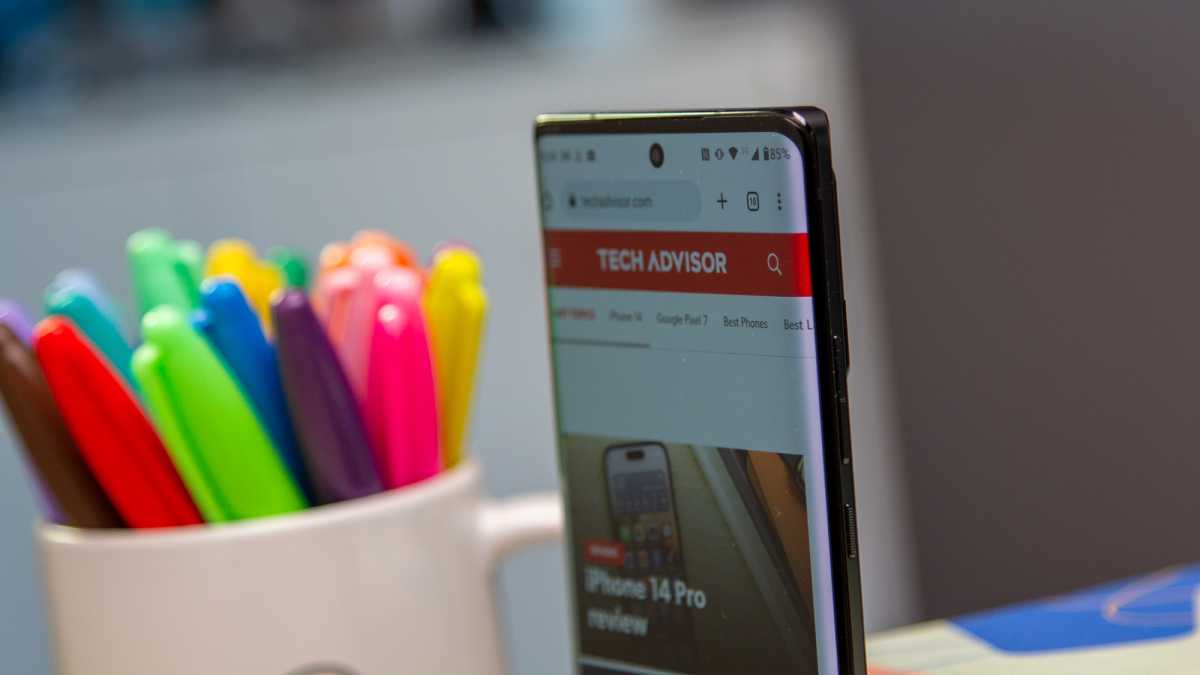
Dominic Preston / Foundry
This is perhaps the biggest concession Motorola has made to keep its pricing down, and one of the major reasons someone might hesitate to pick the Edge 30 Ultra over other rivals. But if you don’t mind a slightly more fragile phone (you’ll use a case anyway … right?) then there might not be much in it.
Screen and speakers
- OTT 144Hz refresh rate
- Bright OLED panel
- Slightly tinny stereo speakers
The display is one of the Ultra’s headline specs, because Motorola has packed in an OLED panel with a lightning fast 144Hz refresh rate.
That’s not totally unheard of, but so far refresh rates above 120Hz have been limited to gaming phones, where the benefits to frame rates are arguably greatest. A screen this fast is an oddity in a more conventional flagship, and while it’s certainly not unwelcome I do wonder how much it will really add to the experience for the average user – the difference versus a 120Hz screen is incredibly hard to spot.
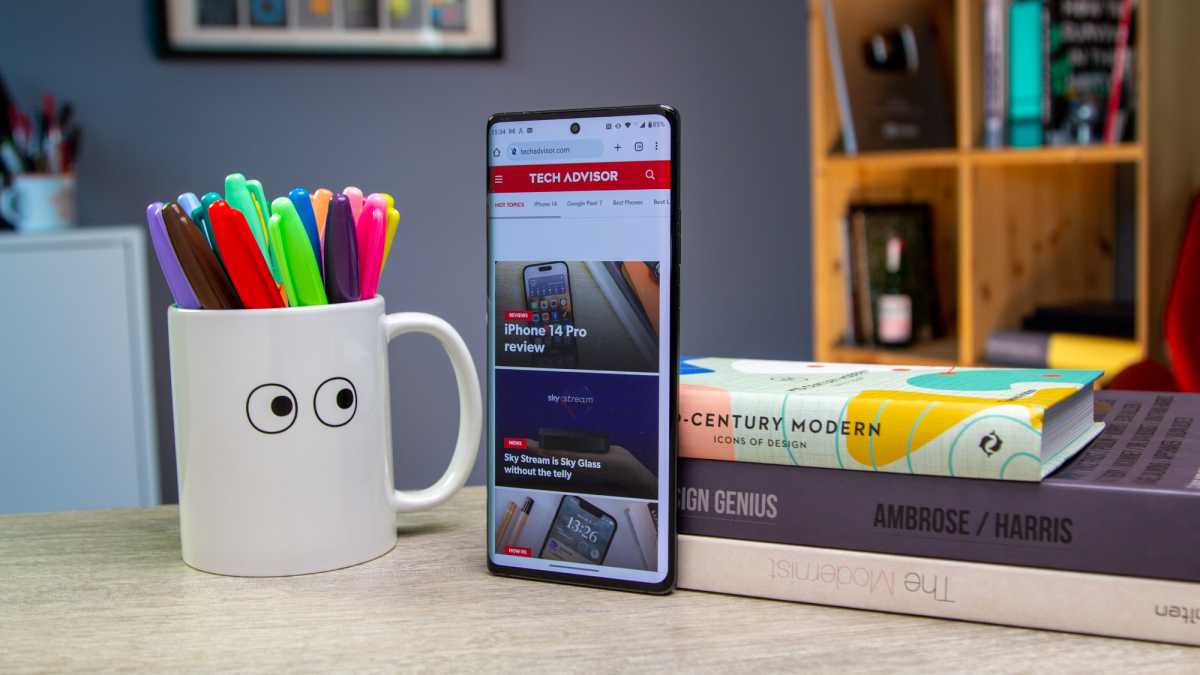
Dominic Preston / Foundry
It’s a great panel otherwise in any case, with fantastic colour range and a peak brightness that’s almost too bright, but makes this easy to use even in direct sunlight. The curvature at the edges is subtle enough that even flat screen fans shouldn’t have too much to complain about, with good palm detection to prevent accidental touches.
Basically, the screen is great, but you probably shouldn’t pay too much attention to the 144Hz hype.
The speakers impress less. They’re stereo at least, but the sound is thin and tinny for the most part. Phone speakers don’t matter much to me, and they might not to you either, but if they are a spec you care about then you’ll find much better audio from most similarly priced alternatives.
Specs and performance
- Most powerful chipset around at launch
- 12GB RAM and 256GB storage
The Edge 30 Ultra is powered by the Snapdragon 8+ Gen 1, which at the time of writing is the most powerful Android chip available – though soon to be supplanted by the 8 Gen 2.
Unsurprisingly, it makes this a pretty powerful device – in fact, it registered the second-highest score we’ve ever seen in the Geekbench 5 multi-core CPU test, just slightly behind the Xiaomi 12S Ultra.
Performance elsewhere is great too, and gaming performance is helped along by the use of an FHD+ display resolution of 1080 x 2400 (as opposed to more detailed QHD+ or 4K displays found in a few alternatives), which even saw two of the simpler GFXBench graphical benchmarks break the 120fps line and really make the most of the 144Hz screen.
What does this all mean for day-to-day use? Well, this phone is fast, fluid, and extremely responsive. It’s good enough to game on, and packs more than enough power for even the most demanding smartphone users, especially since the default version of the phone ships with 12GB RAM and 256GB of storage – though this will vary by market.
Wireless connectivity doesn’t disappoint either, with Wi-Fi 6E and Bluetooth 5.2 supported, along with NFC for contactless payments.
Biometrics aren’t bad either: a fairly fast fingerprint sensor is built into the display itself, along with a less secure face unlock option if you prefer.
Photos and video
- First phone with 200Mp camera
- Great triple camera, but average at night
- No proper periscopic zoom
The Edge 30 Ultra’s headline-grabbing spec is its 200Mp, though funnily enough while it’s a solid camera I wouldn’t consider it one of the phone’s strongest points.
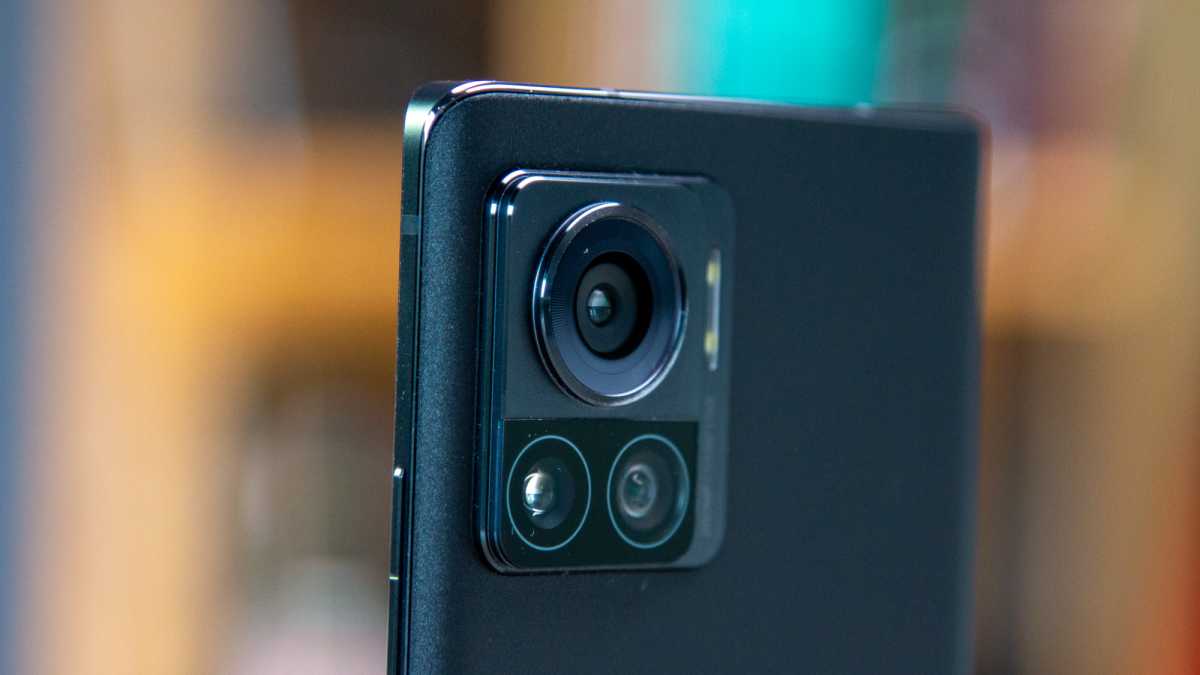
Dominic Preston / Foundry
Here Motorola is using Samsung’s ISOCELL HP1 sensor, which includes optical image stabilisation, paired with an aperture f/1.9 lens. Megapixel count is far from the most important thing in modern cameras, so some scepticism is sensible when manufacturers start throwing around such high resolution sensors. Results here basically impress, but prove the point that the highest resolution sensor is not necessarily the best sensor.
By default the phone doesn’t actually shoot 200Mp images – instead it uses pixel-binning to combine 16 pixels together into one and produce 12Mp results. Shots are crisp, bright, and (as you’d hope) rich in detail, all helped by a comfortable HDR effect.
If you prefer you can shoot at full resolution for 200Mp photos, but there’s not much reason to. This will get you enormous shots suitable for printing at large scale or cropping into aggressively, but there’s a drop in quality as you no longer get the benefits of pixel-binning, without which each pixel is actually rather small. Colour reproduction worsens, noise increases, and photos just generally look a little worse.
The main camera still holds its own at night, and I produced a few night-time shots that I’m really happy with. It’s especially capable at balancing a variety of light sources in otherwise dark environments, meaning it’s well suited to city-dwellers, though like most phones it still struggles to correctly expose the brightest lights at night.
The main sensor is accompanied by two others on the rear: a 12Mp, f/1.6, 2x telephoto; and a 50Mp, f/2.2 ultrawide. The ultrawide is mostly impressive, though understandably drops off a little at night. The telephoto is good, but not great – colours feel a little faded, detail drops, and the fact that it only zooms in to 2x feels limited. That’s especially true given the high resolution main sensor – cropped images from the main camera are just as good at that zoom level, so a 5x or even 3x telephoto would have added much more versatility.
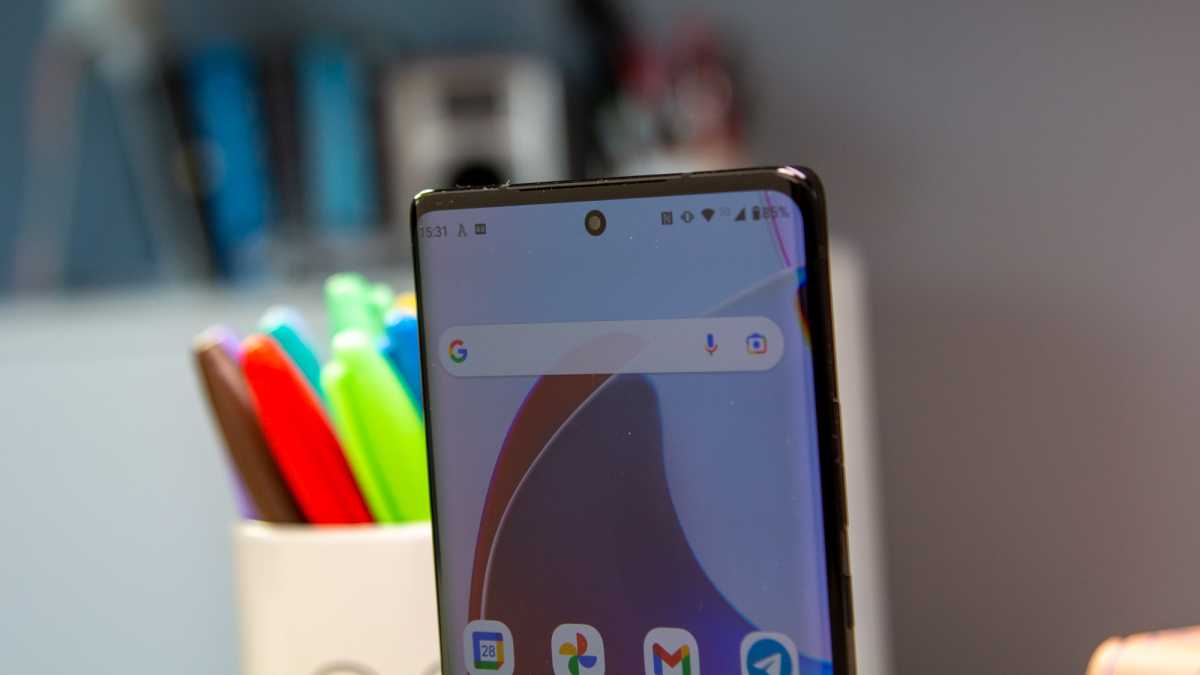
Dominic Preston / Foundry
Flip the phone round and you find a 60Mp, f/2.2 selfie camera – once again at high resolution, with options to shoot at the full 60Mp, 15Mp, or 8Mp. This is a little disappointing given the specs though – colours are off, the HDR effect struggles to kick in correctly, and there’s clearly some overly aggressive noise reduction that leaves images artificially soft and smooth. Selfies aren’t awful, but they’re definitely the worst part of this camera experience.
Rear video can be shot at up to 8K, though anything above 1080p is limited to the main camera only, which is frustrating – the other two sensors should at least be capable of 4K footage. The selfie camera can handle 4K at least, though in turn this camera is capped to 30fps regardless of resolution. Those limits will probably be enough to put off serious videographers from buying this phone, though it’s plenty for video calls and recording the odd concert.
Battery and charging
- Fantastic, two-day battery life
- Extremely fast 125W charging
- Wireless charging too
Most flagship phones drop the ball on battery – it’s usually the only area that cheaper phones actually excel in.
That’s why it’s been so refreshing to find that the Edge 30 Ultra reliably lasts me a full two days with what I’d consider fairly typical use, killing battery anxiety entirely. Strangely this isn’t seen so clearly in our battery benchmark, where it scored a fairly average result, but in day-to-day use the phone has blown me away.
It’s down to a combination of the efficient 8+ Gen 1 chip and a pretty generous 4610mAh battery, but what matters is that I usually go to bed with 70+% battery left, and can run the phone until bedtime the next night before returning to the charger.
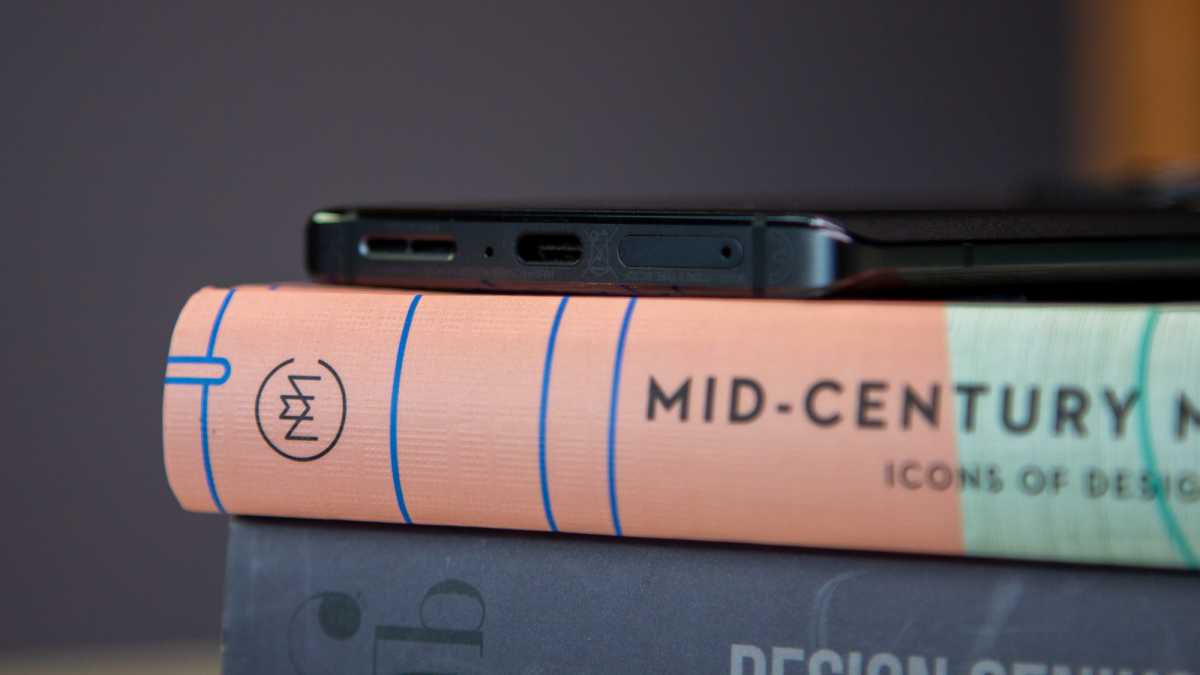
Dominic Preston / Foundry
Even better, when I do go to charge it is very fast. The 125W wired charging here is among the fastest available. In my test it restored 58% of the battery in just 15 minutes, with a full charge in less than half an hour.
Wireless charging is here too, and will work with any Qi-compatible charger. The phone actually supports up to 50W wireless charging speeds, but this requires the company’s official TurboPower 50W Wireless Charging Stand, and at the time of writing this isn’t even on sale in the UK, so it’s not clear if or when you’d be able to make the most of it.
Software and updates
- Ships with Android 12
- Close to ‘stock’, but with extra features
- Three Android updates promised
Software is another key strength here. The 30 Ultra runs Android 12 out of the box (no Android 13 just yet), and the experience is pretty close to what people think of as ‘stock Android’, which it’s lean, simple, and easy to use. The visuals are classic Android, and Motorola hasn’t reinvented the wheel when it comes to the layout or organisation of the OS.
What it does add is a few extra tricks. My favourite are the always-on display notification controls: tap and hold on an icon to read your notifications without opening the phone, with quick swipe options to dismiss them or even use app-specific options like marking a message as read. It’s quick, easy, and something I wish every Android phone offered.
Classic Motorola options return here, including customisation options and a few gesture-based shortcuts like a double karate chop to turn on the torch. It’s all optional, but mostly helpful.
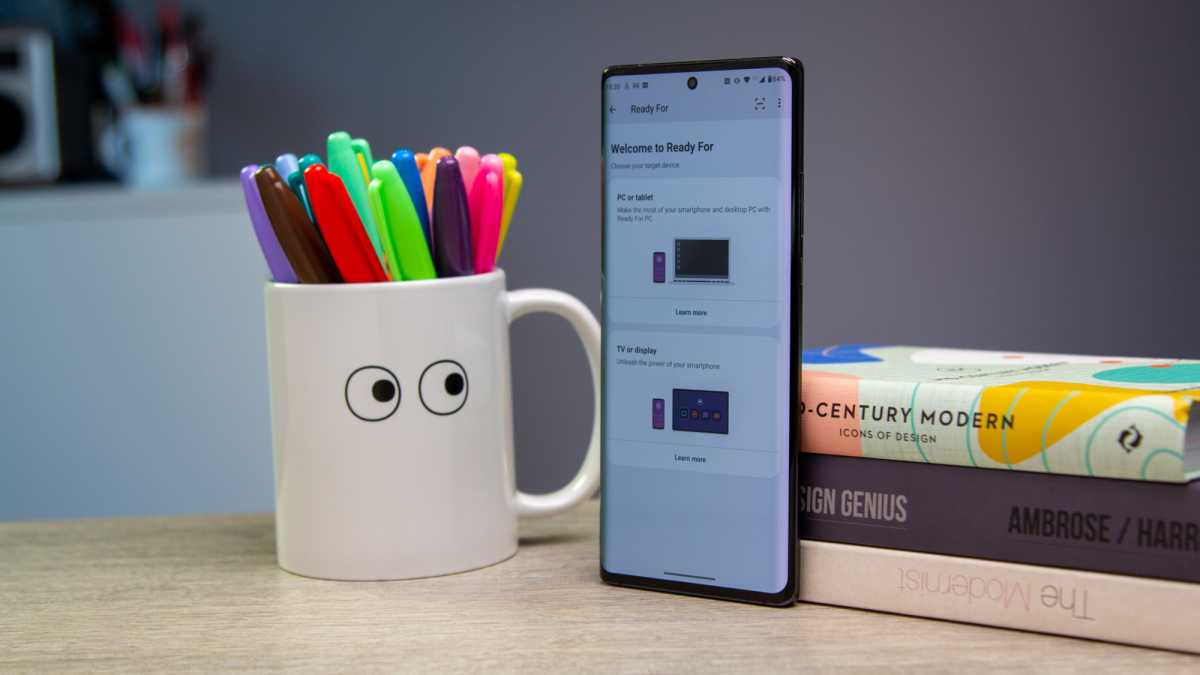
Dominic Preston / Foundry
Finally, there’s the company’s Ready For software. This works wired or wirelessly, lets you connect the phone to a computer to share files or control the phone remotely, or even pair with a display with a desktop-style interface so that you can have a rudimentary computer set-up on the go.
Motorola has also promised that the phone will receive three years of Android version updates, which means it should finish up with Android 15 a few years from now. That’s not quite the best software support promise around for Android – Samsung wins that prize with four years of version updates – but it’s pretty close, and as good as what Google offers with its Pixel 7 flagships.
Price and availability
The most surprising thing about the Edge 30 Ultra is simply the price: at £749/€899 this is comfortably cheaper than most similarly specced rivals, and offers exceptional value for a flagship.
Sadly there’s no word yet on…
